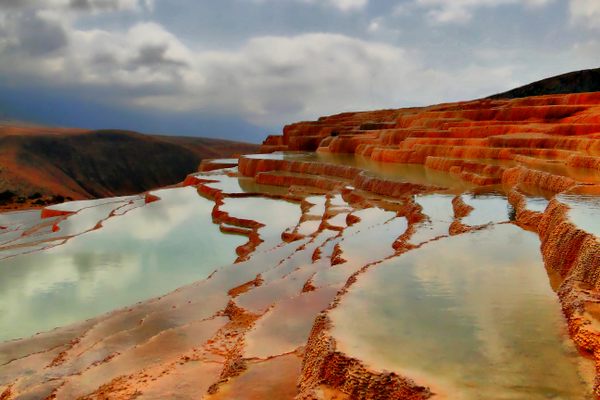About
Some hot springs are in picturesque mountain valleys, or in mystical high desert plateaus. The springs the feed the thermal baths in Hokkaido's most popular spa town, however, flow from a blasted primordial caldera so infernal and reeking of sulfur, it was traditionally known as a gateway to hell.
Jigokudani, or "Hell Valley" in English, is a 24-acre smoking crater of geothermal activity, created by a volcanic eruption 20,000 years ago (not to be confused with the more well-known Jigokudani in Honshu, home to the famous hot-tubbing snow monkeys). Steam vents, geysers, and boiling lakes abound in this park that can usually be smelled before it is seen.
Rusty mountain vistas surround fiery black sulfur mud ponds and hot rivers that flow down to feed the baths in the nearby well-frequented resort town of Noboribetsu. The formal spas of Noboribetsu date back to the 19th century, and were used as hospitals were wounded soldiers recovered after the Russo-Japanese War. Today the town is known as a sort of hot spring supermarket, boasting dozens of baths with many different kinds of mineral thermal waters.
The springs, geysers, hissing valleys, and baths are watched over by numerous yukijin statues, demons who bid visitors welcome and intercede in the underworld to secure good fortune for humans. Noboribetsu boasts a Shinto shrine dedicated to Enma, the King of Hell, and features a Festival of Hell in August that includes regular Demon's Firework shows. Jigokudani itself can be explored via an 8-kilometer network of boardwalks that run through the park that give visitors access to foot baths in warm volcanic rivers, as well as views of ancient forests and snow-capped peaks within a surprisingly cozy diabolical landscape.
Related Tags
Hidden Japan: Sado Island, Nara & Kyoto
Explore a different side of Japan.
Book NowCommunity Contributors
Added By
Published
October 25, 2016





























































